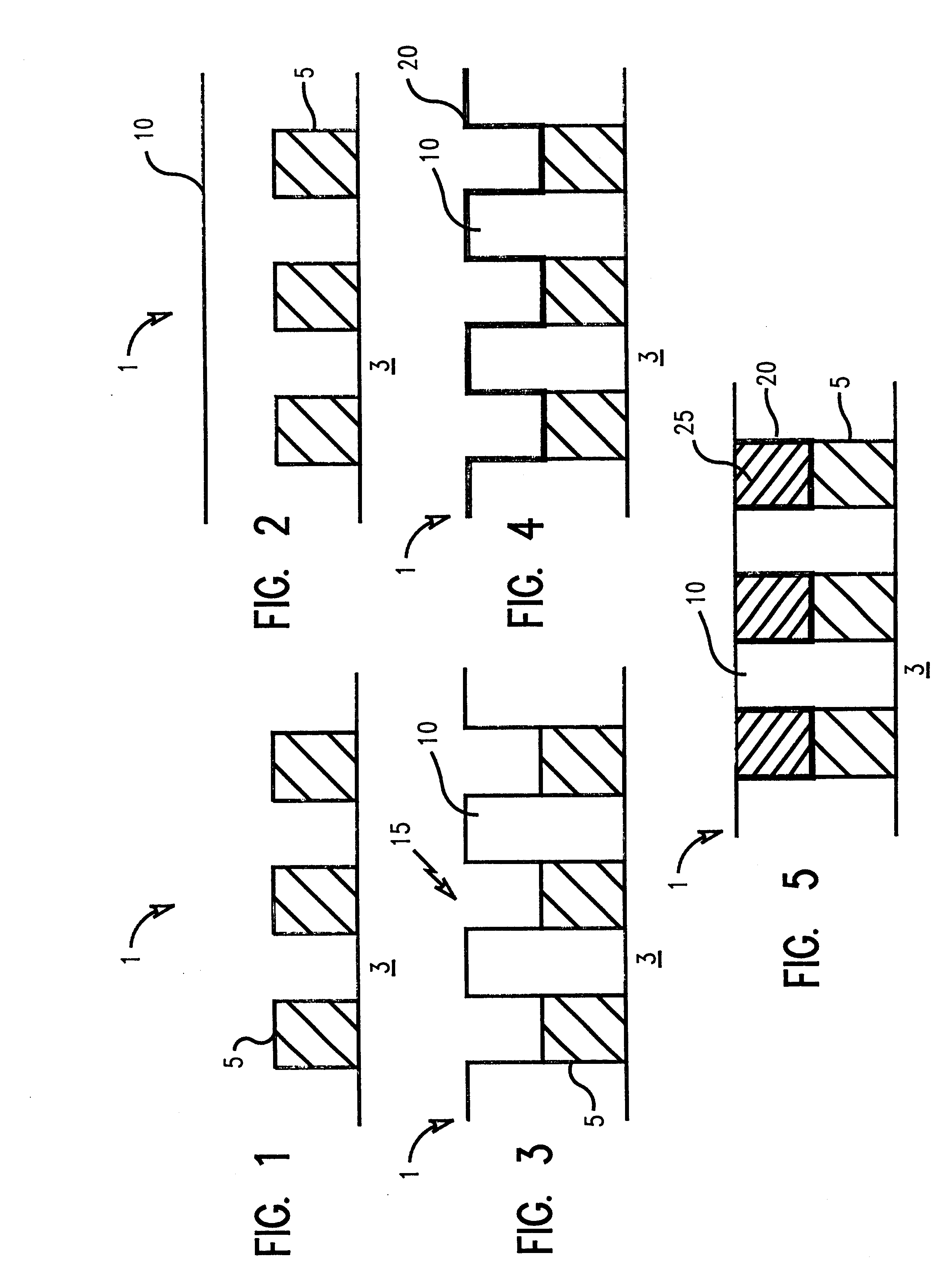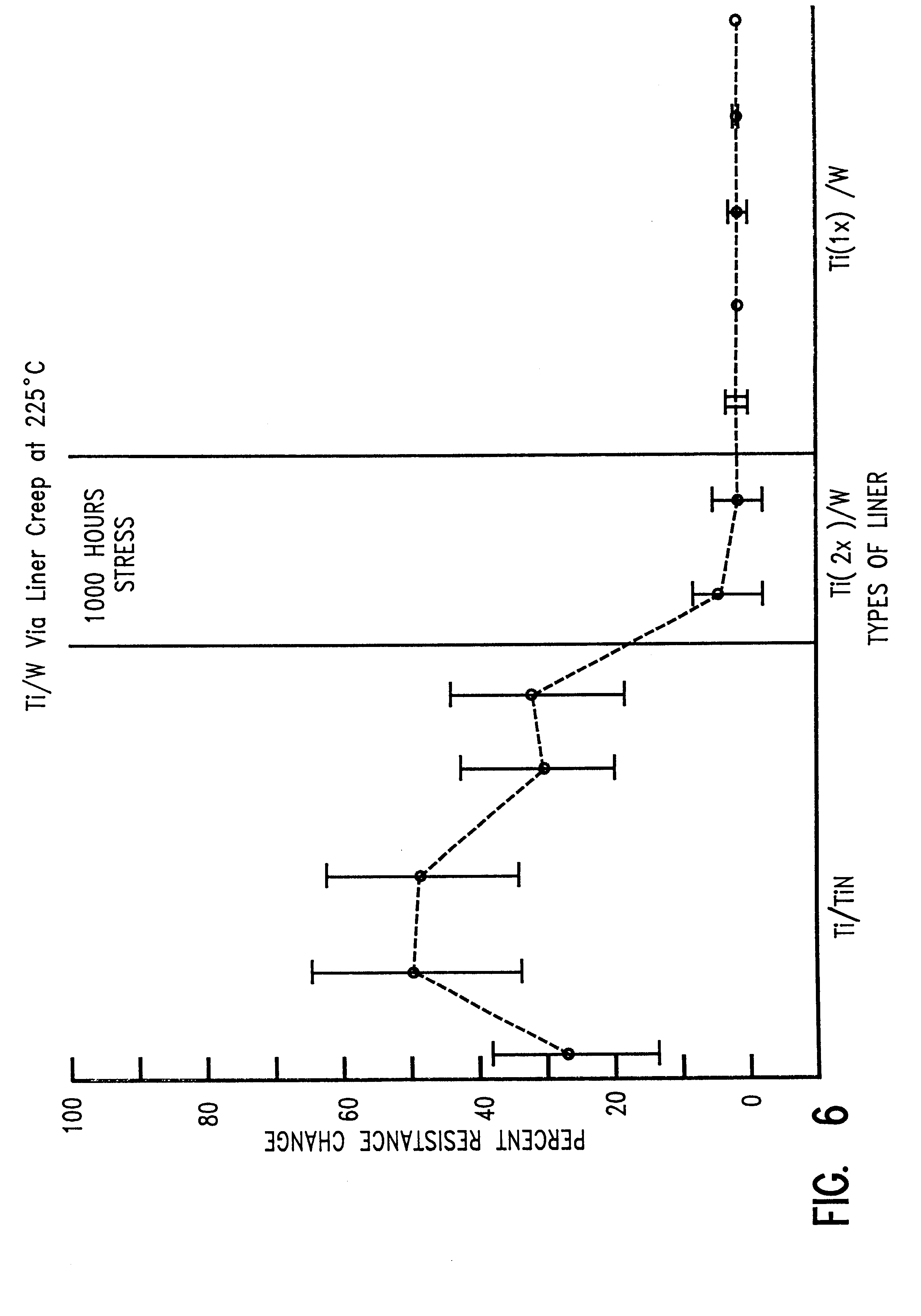Sputtered tungsten diffusion barrier for improved interconnect robustness
a technology of diffusion barrier and tungsten, which is applied in the direction of vacuum evaporation coating, semiconductor devices, coatings, etc., can solve the problems of cvd-w stud defects, underlying materials are often attacked, and the surface of this electrically insulative layer is routinely uneven, so as to reduce the extrusion of metal wires, increase the target to substrate distance, and reduce the heating effect
- Summary
- Abstract
- Description
- Claims
- Application Information
AI Technical Summary
Benefits of technology
Problems solved by technology
Method used
Image
Examples
Embodiment Construction
)
In describing the preferred embodiment of the present invention, reference will be made herein to FIGS. 1-6 of the drawings in which like numerals refer to like features of the invention. Features of the invention are not necessarily shown to scale in the drawings.
In FIG. 1, semiconductor device 1 has a substrate 3 shown with multiple metal lines 5 formed on its surface. Substrate 3, typically made of silicon, not only includes metal lines 5 as shown. It may also include a plurality of dielectric and conductive layers, such as silicon oxide or nitride, as are necessary to form active devices on a semiconductor substrate. Metal lines are typically low resistivity metals such as aluminum or copper, and their binary and tertiary alloys. They are generally deposited using physical vapor deposition, patterned, and etched to produce the desired circuitry. The metal lines 5 can also be connected to an electrically active device in substrate 3 (not shown).
FIG. 2 shows continued processing ...
PUM
| Property | Measurement | Unit |
|---|---|---|
| thickness | aaaaa | aaaaa |
| pressure | aaaaa | aaaaa |
| thickness | aaaaa | aaaaa |
Abstract
Description
Claims
Application Information
 Login to View More
Login to View More - R&D
- Intellectual Property
- Life Sciences
- Materials
- Tech Scout
- Unparalleled Data Quality
- Higher Quality Content
- 60% Fewer Hallucinations
Browse by: Latest US Patents, China's latest patents, Technical Efficacy Thesaurus, Application Domain, Technology Topic, Popular Technical Reports.
© 2025 PatSnap. All rights reserved.Legal|Privacy policy|Modern Slavery Act Transparency Statement|Sitemap|About US| Contact US: help@patsnap.com



